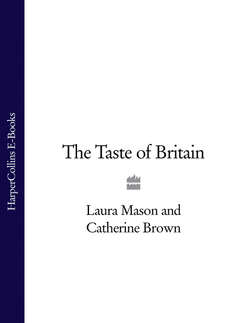Читать книгу The Taste of Britain - Hugh Fearnley-Whittingstall - Страница 335
THE MEAT IS BROWNISH-YELLOW, FLAVOURFUL AND CHEWY; THEY ARE SOLD BY WEIGHT OR IN PRE-WEIGHED PORTIONS. THERE ARE SIGNIFICANT DISPARITIES OF SIZE BETWEEN WHELKS FROM DIFFERENT AREAS AROUND THE BRITISH COAST. HISTORY:
ОглавлениеWhelks, Buccinum undatum, are a common gastropod whose coiled, pointed shells are found on the coasts. Variant names are dog whelk, waved whelk, and buckie (in Scotland). The Romans carried them to various inland sites, and they are mentioned in the accounts of fifteenth-century fishmongers and many medieval households. For instance, 4,000 were used to garnish a salted sturgeon at the enthronement of the Archbishop of Canterbury in the early sixteenth century. The normal medieval procedure was to boil in water and eat with vinegar and parsley (Wilson, 1973).
Fishing grounds for whelks are off the north coast of Norfolk and in the Thames estuary. They formed part of the diet of the London poor, both at home and on holiday on the Kent coast. The phrase, ‘he couldn’t run a whelk stall’, suggests they found a ready sale. However, they were never considered elegant.
When they are bought ready-cooked as street food, the consumer splashes as much vinegar on as he would wish. They remain a seaside staple and as part of the food traditions of the urban poor in Midland cities. The uncooked meat has found a new market in Chinese and Japanese restaurants.
